When it comes to the world of audio electronics and vintage equipment, the debate over the superiority of capacitors is a hot topic among musicians, audiophiles, and electronics enthusiasts. Two capacitor types that frequently take center stage in this discussion are Paper in Oil (PIO) capacitors and Orange Drop capacitors.
Both are renowned for their unique sonic characteristics and distinct design, the question remains – which is better? In this article, we will delve into the differences between Paper in Oil capacitors and Orange Drop capacitors, exploring their construction, sound qualities, and applications, to help you make an informed decision on which capacitor type aligns best with your specific needs and tonal preferences.
What Is A Paper In Oil (PIO) Capacitor?
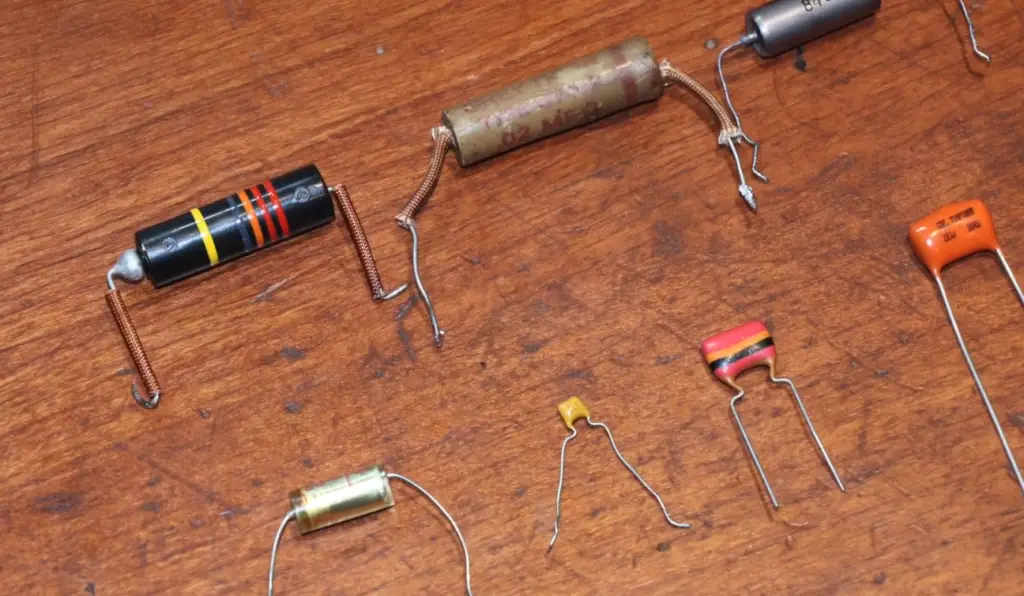
Construction and Design
A Paper In Oil capacitor, as the name suggests, consists of a paper dielectric that is impregnated with oil. The paper dielectric serves as the insulating material between the capacitor’s conductive plates, while the oil acts as a coolant and also contributes to the capacitor’s overall electrical properties. The conductive plates are typically made of metal foil, such as aluminum, and they are rolled together with the paper dielectric, forming a cylindrical or tubular shape.
The choice of materials in PIO capacitors is what sets them apart from other types of capacitors. The use of paper as a dielectric brings certain advantages to the table. Paper is a low-loss material, meaning it exhibits minimal energy dissipation in the form of heat during operation. This property makes PIO capacitors particularly suitable for high-performance applications where signal integrity is of utmost importance.
Sonic Characteristics
One of the main reasons why audiophiles and vintage equipment enthusiasts favor PIO capacitors is their unique sonic characteristics. Many users claim that PIO capacitors introduce a warm, rich, and natural sound to audio systems. They are believed to impart a certain “vintage” quality to the audio, reminiscent of classic audio equipment from the mid-20th century.
The sound of PIO capacitors is often described as having a smooth top-end, well-defined midrange, and a warm bass response. This perceived improvement in audio quality has made PIO capacitors a popular choice for use in audio signal coupling, tone control circuits, and other critical audio paths.
Limitations and Considerations
While PIO capacitors have garnered a dedicated following, they do have some limitations and considerations to keep in mind [2]:
- Firstly, due to the nature of the paper dielectric, PIO capacitors are relatively larger in size compared to modern capacitors with other dielectric materials. This can be a practical concern, especially in compact electronic designs;
- Secondly, PIO capacitors tend to exhibit higher capacitance tolerances compared to modern capacitors. This means that the actual capacitance value of a PIO capacitor can deviate more from its labeled value. As a result, careful selection and matching of PIO capacitors might be necessary for precision applications;
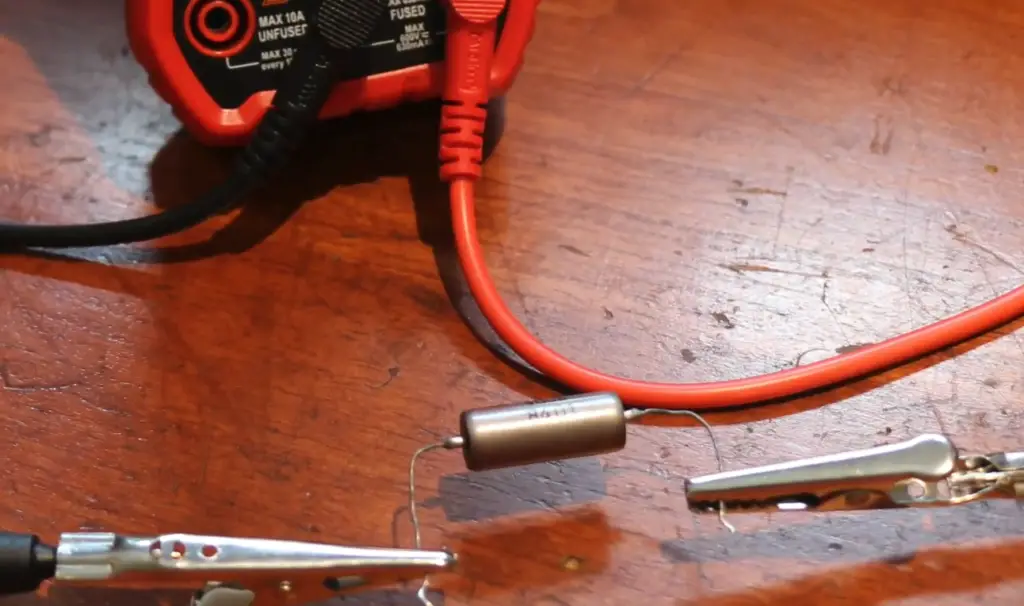
What Is An Orange Drop Capacitor?
An Orange Drop capacitor is a specific type of capacitor that has gained popularity in the world of guitar and audio electronics. It is known for its distinctive orange-colored outer casing, which has become a recognizable feature among musicians, electronics hobbyists, and vintage gear enthusiasts. Orange Drop capacitors are widely used in electric guitars, amplifiers, and other audio equipment due to their unique properties and sonic characteristics.
Construction and Design
Orange Drop capacitors are made using metalized polypropylene as the dielectric material. The metalized polypropylene is a type of plastic film that is coated with a thin layer of metal, typically aluminum, on one side. The metal coating enhances the capacitor’s performance by increasing its capacitance and improving its overall electrical properties [3].
The capacitor’s orange color comes from the outer protective coating, which is typically made of a flame-retardant epoxy resin. This distinctive orange casing not only makes it visually stand out but also offers protection to the internal components from external factors like moisture and dust.
Sonic Characteristics
The sonic characteristics of Orange Drop capacitors are highly regarded by musicians and audio enthusiasts. They are known for providing a smooth and clear sound, with excellent frequency response and transparency. These capacitors are often praised for their ability to preserve the natural tone of guitars and audio signals without coloring or altering the sound significantly.
Orange Drop capacitors are particularly popular in electric guitars, where they are often used in tone control circuits, volume pots, and tone capacitors. Many guitar players claim that Orange Drop capacitors add a certain warmth and clarity to their instrument’s tone, making them a sought-after upgrade in guitar modifications and customizations.
Versatility and Reliability
Another reason for the popularity of Orange Drop capacitors is their versatility and reliability. They are available in various capacitance values, making it easy to find the right capacitor for specific applications in audio circuits. Additionally, their metalized polypropylene construction ensures stable capacitance over time, and they are generally more durable than some other capacitor types.
Different Capacitors in Tone Circuits
Tone circuits in audio electronics, especially in guitars and amplifiers, often use capacitors to shape the frequency response and influence the overall sound. Different types of capacitors can yield varying results, affecting the tone in distinct ways.
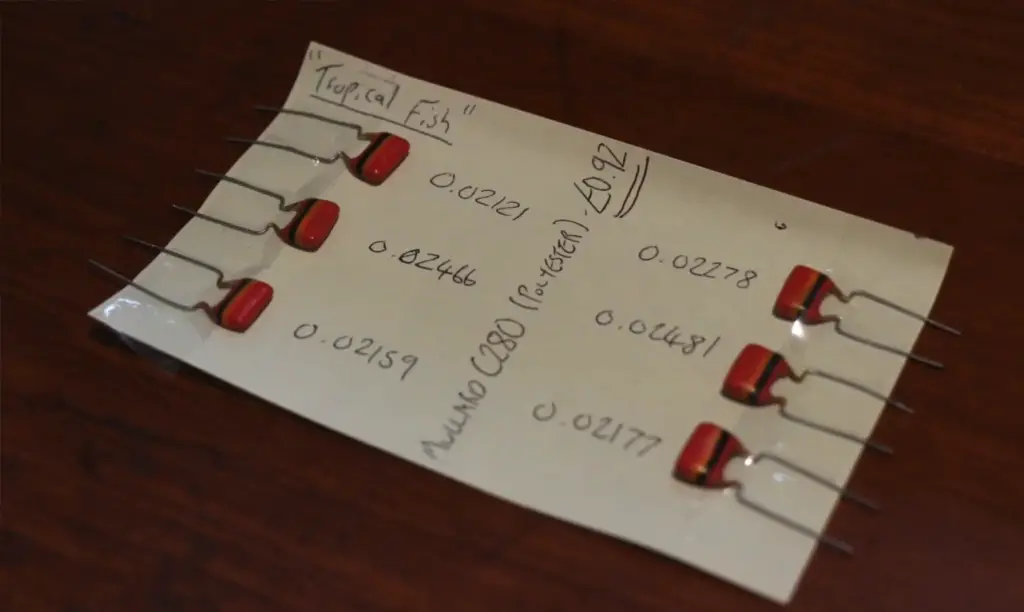
Here are some commonly used capacitors in tone circuits:
- Ceramic Capacitors: Ceramic capacitors are the most basic and commonly found capacitors. They are inexpensive and come in various capacitance values. However, they are not widely used in tone circuits due to their relatively poor audio characteristics. They can introduce a harsh or brittle sound and are not preferred for critical audio paths;
- Film Capacitors: Film capacitors, including Polyester (Mylar), Polypropylene, and Polystyrene, are better suited for audio applications. They offer better sound quality and are available in a range of capacitance values. Among these, Polypropylene capacitors are often favored for their low distortion and transparency, making them popular choices in tone circuits where high fidelity is desired;
- Metallized Polyester (PET) Capacitors: These capacitors have a metal layer applied to one side of the polyester film. They are an improvement over regular ceramic capacitors in terms of sound quality but are still considered inferior to other film capacitors like Polypropylene;
- Metallized Polypropylene (PP) Capacitors: Metallized Polypropylene capacitors, commonly known as “Orange Drop’ capacitors, have gained a reputation for their exceptional sound quality. They offer a smooth, clear, and warm tone, making them popular choices in guitar tone control circuits, particularly for tone caps (tone capacitors) in electric guitars;
- Metallized Polyphenylene Sulfide (PPS) Capacitors: PPS capacitors are known for their high stability and low distortion characteristics. They are suitable for audio applications that require precise and accurate tone shaping;
- Silver Mica Capacitors: Silver mica capacitors are highly stable and have low tolerance values, making them suitable for precise tone shaping. They are often used in high-end audio equipment and vintage gear;
- Oil Capacitors: Oil capacitors, like Paper In Oil (PIO) capacitors, are known for their warm and vintage-like sound. While they were more commonly used in the past, they are still sought after by vintage equipment enthusiasts and audiophiles for their unique sonic characteristics [4];
When selecting capacitors for tone circuits, it’s essential to consider factors such as capacitance value, tolerance, material, and overall circuit design. Musicians and audio enthusiasts often experiment with different capacitor types to achieve their desired tonal characteristics, making it an exciting area of exploration and customization in the world of audio electronics.
Difference Between Paper in Oil Capacitors and Orange Drop:
1. Voltage Range
The voltage range of a capacitor refers to the maximum voltage that the capacitor can withstand without breaking down. It is an essential consideration, especially in audio circuits where voltage fluctuations may occur. In this regard, Orange Drop capacitors typically have a higher voltage rating compared to Paper in Oil capacitors.
Orange Drop capacitors commonly have voltage ratings ranging from 100V to 600V, making them suitable for a broad range of applications in audio circuits, guitar tone controls, and amplifiers. On the other hand, Paper in Oil capacitors usually have lower voltage ratings, typically ranging from 200V to 600V. This limitation in voltage range makes Paper in Oil capacitors more suitable for low to medium-voltage applications.
2. Temperature Range
Temperature range is another important factor to consider, especially in applications where capacitors may be subjected to extreme temperatures. In this aspect, both capacitor types have different performance characteristics.

Orange Drop capacitors generally have a wider temperature range and can withstand higher temperatures compared to Paper in Oil capacitors. They are designed to operate reliably in a temperature range of -40°C (-40F) to 85°C (185F), making them suitable for a variety of environmental conditions [5].
On the other hand, Paper in Oil capacitors have a more limited temperature range and are typically rated for operation between -25°C (-13F) to 70°C (158F). While this temperature range is sufficient for most standard audio applications, it may be a limiting factor in extreme temperature environments.
3. Capacitance Range
The capacitance range refers to the range of capacitance values available for each capacitor type. This aspect is essential as it determines the versatility of the capacitors in various circuits.
Orange Drop capacitors come in a wide range of capacitance values, typically spanning from picofarads (pF) to microfarads (μF). This broad range of capacitance values allows for more flexibility in audio circuit design and tone-shaping applications.
In contrast, Paper in Oil capacitors offer a more limited range of capacitance values. While they are available in various values, the range is generally narrower compared to Orange Drop capacitors [6]. This limitation may make it more challenging to find specific values for certain niche applications.
4. Tolerance
Capacitor tolerance refers to the allowable deviation from the specified capacitance value. A lower tolerance indicates a more accurate and precise capacitor, which is crucial in applications where precise capacitance values are required.
Orange Drop capacitors typically have a lower tolerance, often ranging from ±5% to ±10%. This level of accuracy makes them suitable for critical audio paths and tone control circuits where precise tuning is desired.
Paper in Oil capacitors, however, tend to have a higher tolerance, typically ranging from ±10% to ±20%. While this level of tolerance is adequate for many audio applications, it may not be ideal for precision-driven circuits.
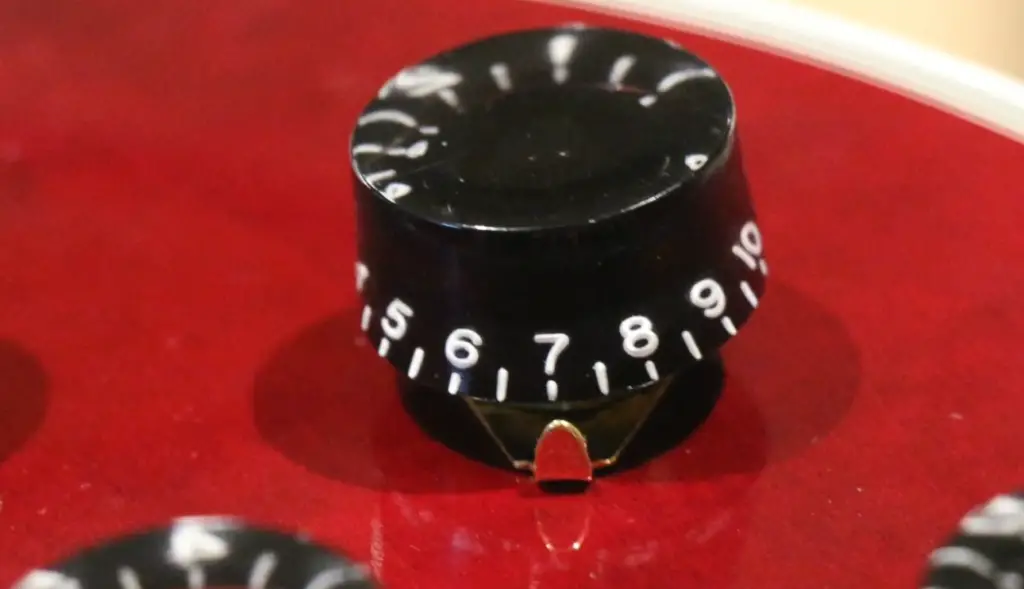
5. Manufacturers
Both Paper in Oil and Orange Drop capacitors are manufactured by different companies, and the brand can play a role in their popularity and perceived quality.
On the other hand, Paper in Oil capacitors are produced by various manufacturers, and some brands have achieved legendary status due to their association with vintage audio equipment. However, finding authentic vintage Paper in Oil capacitors can be challenging, and modern reproductions may vary in quality and sonic characteristics.
Are Paper in Oil Capacitors Better Than Orange Drop?
When it comes to capacitors used in audio circuits and guitar tone controls, both Paper in Oil (PIO) capacitors and Orange Drop capacitors have their dedicated fan base. Each type has its own unique characteristics, and the question of whether one is better than the other is a matter of personal preference and specific application requirements.
Sound Characteristics
One of the primary reasons why people gravitate towards Paper in Oil capacitors is their warm and vintage-like sound. PIO capacitors are believed to add a certain richness and sweetness to the audio signal, often associated with classic audio equipment from decades past. Audiophiles and vintage gear enthusiasts particularly appreciate this nostalgic and organic sound [7].
On the other hand, Orange Drop capacitors are known for their transparent and clear sound quality. They are designed to have low distortion and to faithfully reproduce the input signal without coloration. This characteristic makes Orange Drop capacitors a popular choice for those seeking precise and accurate tone control.
Versatility and Range
Orange Drop capacitors have the upper hand when it comes to versatility and range. They are available in a wide range of capacitance values, making them suitable for various audio applications, from tone shaping in guitars to filtering and coupling in amplifiers and other audio equipment. Additionally, Orange Drop capacitors have higher voltage and temperature ratings, making them more suitable for a broader range of electronic projects.
On the other hand, Paper in Oil capacitors generally have more limited options in terms of capacitance values and voltage ratings. While they excel in certain vintage audio applications and some guitar circuits, they might not be as readily adaptable to a wide array of projects as Orange Drop capacitors.

Tolerance and Consistency
Tolerance refers to the allowed deviation from the specified capacitance value, and it can affect the precision of tone control and signal processing. Orange Drop capacitors tend to have lower tolerance values (often ranging from ±5% to ±10%), ensuring more consistent performance across different units. This makes them desirable for applications where precise tuning and tonal shaping are critical.
Paper in Oil capacitors, on the other hand, may have higher tolerance values (typically ranging from ±10% to ±20%), which might impact their accuracy in certain applications [8]. However, it’s essential to note that vintage Paper in Oil capacitors might vary even more in tolerance due to their age and manufacturing processes.
Subjectivity and Personal Preference
Ultimately, the question of whether Paper in Oil capacitors are better than Orange Drop capacitors, or vice versa, comes down to personal preference and the specific sound characteristics one desires. Some individuals are drawn to the vintage charm and warmth of PIO capacitors, while others appreciate the clarity and precision offered by Orange Drop capacitors.
It is worth noting that both capacitor types have their own merits and can contribute positively to audio circuits and tone controls. Moreover, the overall impact of capacitors on sound can be subjective and may vary depending on the entire audio chain and individual listening preferences.
What Type of Capacitor Is a Sprague Orange Drop?
A Sprague Orange Drop capacitor is a type of metalized film capacitor, specifically made by the company Vishay Sprague. These capacitors are also commonly known as “Orange Drop” capacitors due to their distinctive orange-colored outer casing. The orange color is not an indicator of the capacitor’s dielectric material but rather a unique branding choice by the manufacturer to make their product easily recognizable.
The dielectric material used in Sprague Orange Drop capacitors is metalized polypropylene, which is a type of plastic film coated with a thin layer of metal (typically aluminum) on one side. This metalized construction enhances the capacitor’s electrical performance and makes it suitable for a wide range of audio and electronic applications.
Sprague Orange Drop capacitors are highly regarded for their excellent sound quality and transparency. They are known for providing a smooth and clear sound with minimal distortion, making them a popular choice in guitar tone controls, audio circuits, and amplifiers.
Their low tolerance values (often ±5% or ±10%) ensure accurate and consistent capacitance values, which is essential in precise tone shaping and signal processing.
The broad capacitance range of Sprague Orange Drop capacitors, spanning from picofarads (pF) to microfarads (μF), provides versatility and flexibility for various circuit designs. Additionally, their voltage ratings typically range from 100V to 600V, making them suitable for a wide range of voltage requirements in electronic applications [9].
Sprague Orange Drop capacitors have gained a dedicated following among musicians, audiophiles, and vintage gear enthusiasts due to their reliable performance, unique sonic characteristics, and the nostalgia associated with their iconic orange color.
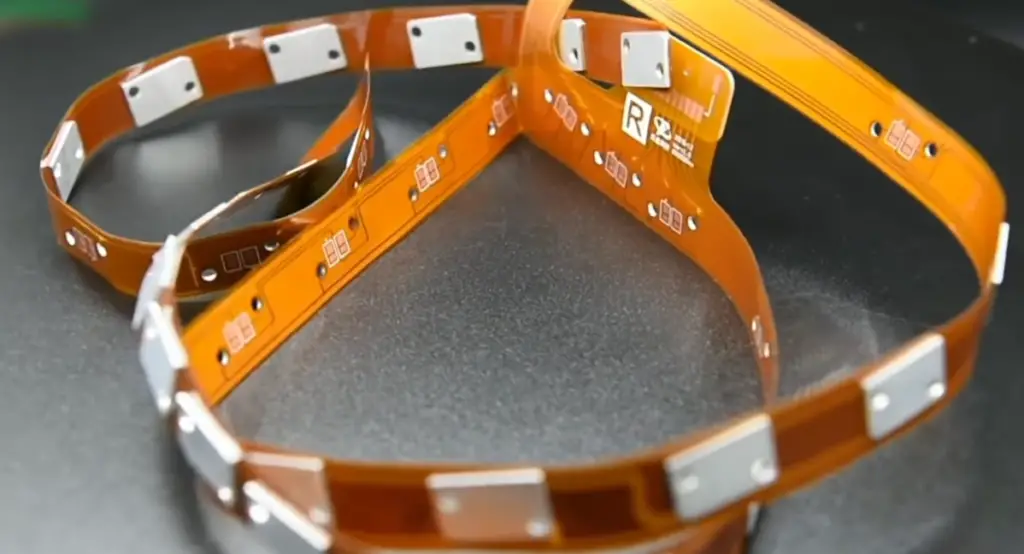
Why Should You Use Orange Drop Tone Capacitors:
Different Capacitors Don’t Affect Tone Because They’re Not In The Signal Output Path
A common argument skeptics raise against the use of premium capacitors like Orange Drop is that capacitors in tone circuits are not in the direct signal output path, and therefore, they do not contribute to the overall sound. While it’s true that capacitors are typically used in filters and tone control circuits, they do affect the signal by shaping its frequency response.
Capacitors act as filters, altering the way certain frequencies pass through and are amplified. Different capacitor types have distinct electrical properties that affect how they pass and attenuate certain frequencies, thus contributing to the overall tonal character. Orange Drop capacitors, with their low distortion and clear sound, can introduce subtle changes that can make a difference in the perceived tone.
Replacing A High-Quality Modern Capacitor With A “Vintage” Capacitor Has A Profound Effect On Tone
One of the key reasons why many musicians and audiophiles choose Orange Drop capacitors is due to the “vintage” aspect associated with them. Vintage equipment and guitars from the mid-20th century are often lauded for their warm and classic tones. By replacing a high-quality modern capacitor with an Orange Drop capacitor, it is possible to impart a touch of that vintage vibe to the sound.
The metalized polypropylene dielectric and other characteristics of Orange Drop capacitors contribute to a unique sonic signature that many players find desirable. The subtle coloration introduced by these capacitors can enhance the overall musical experience and evoke nostalgia for iconic recordings from the past.
The Placebo Effect
The Placebo Effect is a psychological phenomenon where a person experiences real improvements in their condition or perception despite receiving treatment or intervention that is, in reality, inactive or neutral. In the context of using Orange Drop capacitors, some argue that the perceived tonal improvement might be a result of the Placebo Effect [10].
While the Placebo Effect can indeed influence how we perceive changes in tone, it is essential to recognize that Orange Drop capacitors do have genuine characteristics that impact the sound. Their electrical properties, low distortion, and specific tonal coloration contribute to their sonic profile.
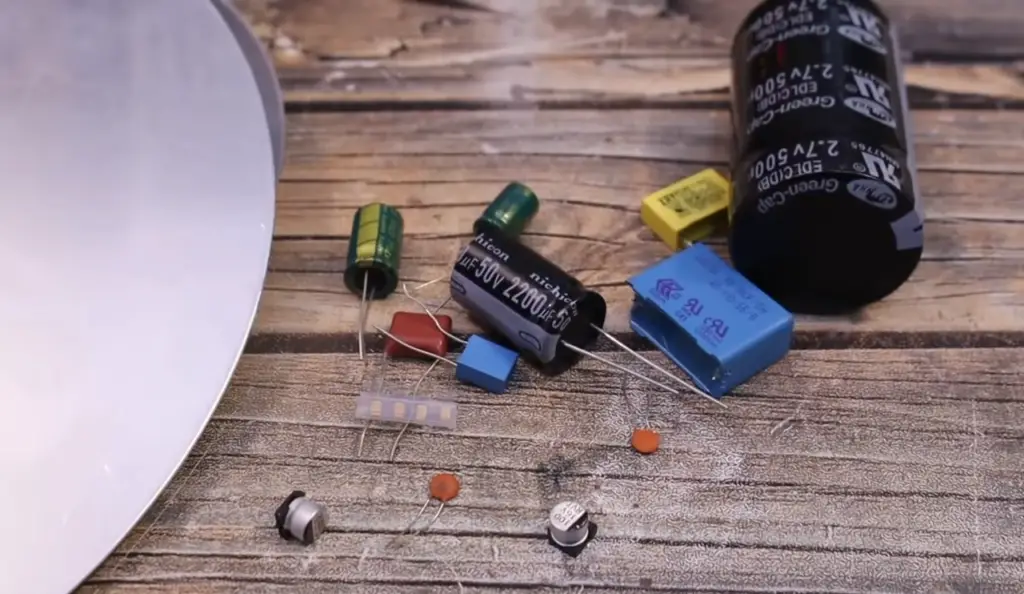
FAQ:
1. Do paper-in-oil caps sound better?
Opinions on whether paper-in-oil (PIO) capacitors sound better vary among musicians and audio enthusiasts. Some people believe that PIO capacitors provide a warm and vintage-like sound that adds a pleasant character to audio signals. The paper dielectric and oil impregnation are thought to contribute to this unique tonal coloration.
However, it’s essential to note that sound quality is subjective, and what one person perceives as better might not be the same for another. Ultimately, the preference for PIO capacitors depends on individual taste and the specific application.
2. Do orange-drop capacitors make a difference?
Yes, orange-drop capacitors can make a difference in audio circuits and tone controls. Orange Drop capacitors, with their metalized polypropylene construction, have low distortion and provide a clear, transparent sound.
When used in guitar tone circuits or audio equipment, they can subtly shape the frequency response and affect the overall tonal character. The difference might not be dramatic, but for discerning musicians and audio enthusiasts, it can be a noticeable and desirable improvement.
3. Does it matter which way the orange-drop capacitor goes?
No, the direction of an orange-drop capacitor does not matter in typical audio circuits. Capacitors are non-polarized components, meaning they can be connected in either direction without affecting their functionality. This feature makes them easy to use and install in various circuit designs.
4. Does the color of a capacitor matter?
The color of a capacitor, such as the orange color of Orange Drop capacitors, does not affect its electrical performance or functionality. The color is simply a branding choice by the manufacturer and has no impact on the capacitor’s sonic characteristics or other properties.
5. What is the 2-3 rule of capacitor placement?
The 2-3 rule of capacitor placement is a guideline used in audio circuits to minimize unwanted interference and noise. According to this rule, capacitors should be placed as close as possible to the active components they are coupling or filtering.
Ideally, the distance between the capacitor and the active component should be no more than 2-3 times the distance between the active component’s leads. This helps reduce parasitic capacitance and inductance, improving the overall performance of the circuit.
6. Which type of capacitor is the best quality?
The “best” type of capacitor depends on the specific application and requirements. Different capacitor types excel in various aspects. For audio circuits, high-quality film capacitors like Polypropylene, Polyester, and Polystyrene are often preferred for their low distortion and excellent sound characteristics. In high-end electronics, high-quality tantalum, ceramic, or electrolytic capacitors may be used depending on the circuit’s needs.
7. What are the disadvantages of paper-in-oil capacitors?
While Paper in Oil capacitors have their unique sound qualities, they also have some disadvantages. They are typically larger in size compared to modern capacitors with other dielectric materials, which can be a space constraint in compact electronic designs. Additionally, the capacitance tolerance of PIO capacitors can be relatively higher, meaning the actual capacitance value may deviate more from the labeled value compared to other capacitors.
8. What makes a capacitor better?
A capacitor is considered better when it meets the specific requirements of the application with superior performance characteristics. Factors that contribute to a capacitor’s quality include low ESR (Equivalent Series Resistance), low leakage current, high capacitance tolerance, low distortion, and stability over time and temperature. The choice of the best capacitor also depends on factors such as voltage ratings, temperature range, and physical size.
9. What makes a capacitor discharge faster?
The discharge rate of a capacitor depends on its capacitance and the load resistance connected to it. A larger capacitance value will result in a slower discharge rate, while a smaller capacitance will discharge faster. Additionally, a lower load resistance will discharge the capacitor more quickly than a higher load resistance.
10. Which capacitor has a higher value?
The capacitance value of a capacitor is represented in Farads (F) or its subunits, such as microfarads (μF) or picofarads (pF). A capacitor with a higher capacitance value has a larger energy storage capacity and can store more charge compared to a capacitor with a lower capacitance value.
11. What do bad filter caps sound like?
Bad filter capacitors can result in various audio issues, including noise, distortion, hum, or loss of signal clarity. In guitar tone circuits, for example, failing filter capacitors might lead to a reduction in high-frequency response or increased noise in the signal chain.
12. What are oil caps made of?
Oil capacitors, such as Paper in Oil (PIO) capacitors, are constructed with a paper dielectric material that is impregnated with an oil-based coolant. The paper dielectric serves as the insulating material between the capacitor’s conductive plates, while the oil coolant enhances the capacitor’s electrical properties and provides cooling.
13. Should you replace your oil cap?
Whether you should replace your oil cap depends on its condition and the specific application. If the oil cap is damaged, leaking, or showing signs of failure, such as reduced capacitance or increased tolerance, it is advisable to replace it to ensure proper circuit functionality. Additionally, some vintage oil caps might have degraded over time, affecting their performance, so replacement could be considered for restoration purposes.
14. Can leaving oil cap off damage the engine?
In the context of electronic circuits, oil caps are not related to engine function. However, in the context of an automotive engine, the oil cap is a crucial component for maintaining proper lubrication and preventing contaminants from entering the engine. If the oil cap is left off or improperly secured, it can lead to engine damage due to oil leakage, reduced lubrication, and potential debris entry.
15. Can a loose oil cap cause an engine issue?
A loose oil cap can cause engine issues in the automotive context. If the oil cap is not tightly sealed, it can lead to oil leakage, reduced oil pressure, and potential debris or contaminants entering the engine. Properly securing the oil cap is essential for maintaining engine health and performance.
16. Do oil caps go bad?
Like all capacitors, oil caps can degrade over time due to aging and environmental factors. If an oil cap is damaged, leaking, or showing signs of failure, it may need to be replaced. Additionally, some vintage oil caps might have deteriorated over the years, affecting their electrical properties, making replacement necessary for optimal circuit performance.
Useful Video: Are Paper In Oil Caps Better Than Orange Drop?
References
- https://www.circuitsgallery.com/paper-in-oil-capacitors-vs-orange-drop
- https://www.tdpri.com/threads/the-difference-between-paper-and-oil-caps-and-the-orange-drop-types.755506/
- https://www.thegearpage.net/board/index.php?threads/tone-caps-orange-drops-vs-paper-in-oil.606207/
- https://nicktgr15.github.io/testing-different-types-of-guitar-tone-capacitors-orange-drop-vs-paper-in-oil-vs-polystyrene-vs-polyester-vs-ceramic.html
- https://forum.seymourduncan.com/forum/the-pickup-lounge/327254-caps-orange-drops-vs-oil
- https://www.mylespaul.com/threads/orange-drop-or-pio-caps.182459/
- https://www.strat-talk.com/threads/capacitor-orange-drop-vs-paper-in-oil.138571/
- https://www.talkbass.com/threads/difference-in-capacitors.1044351/
- https://guitarelectronics.com/why-use-orange-drop-tone-capacitors/
- http://zerocapcable.com/?page_id=224





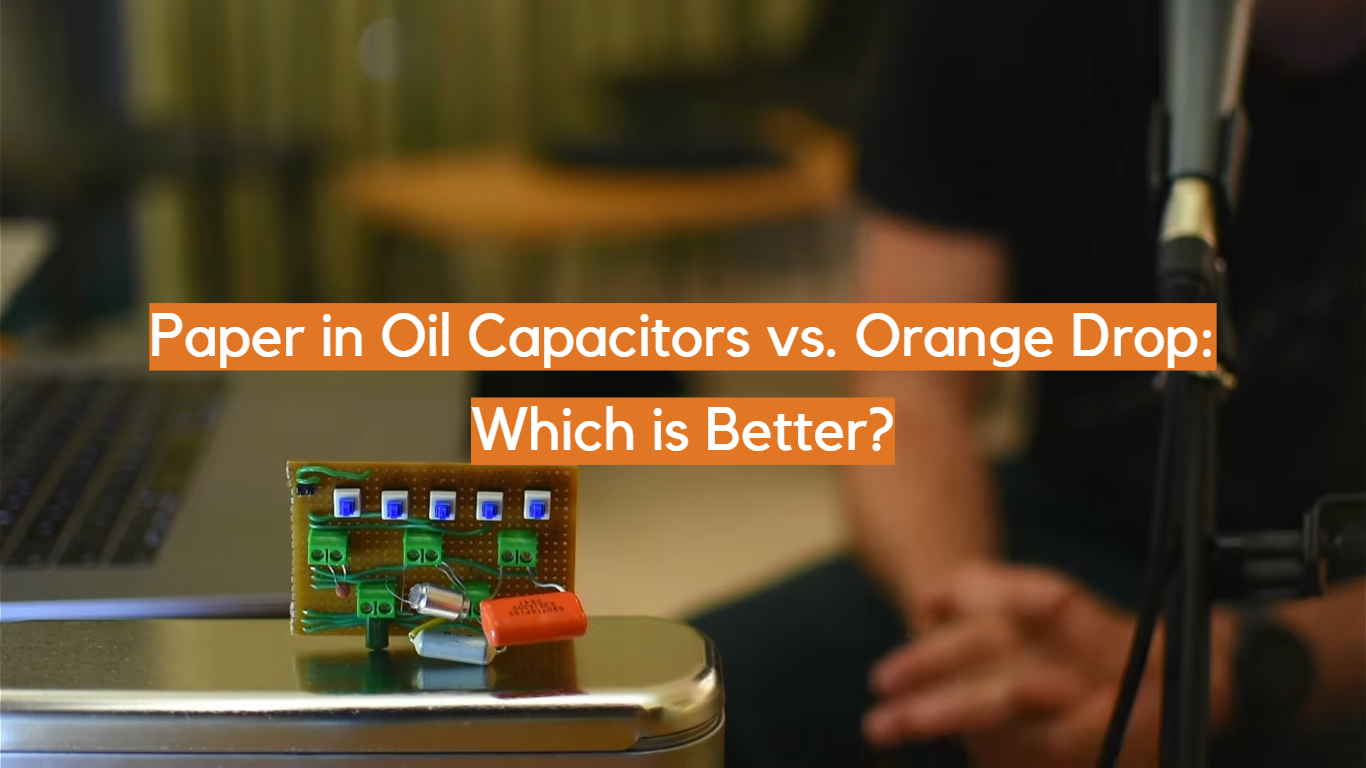




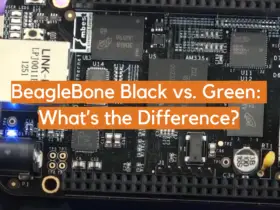
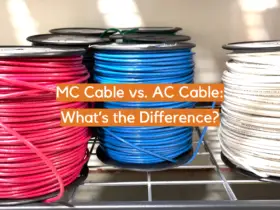


Leave a Reply